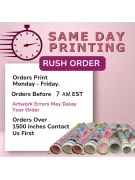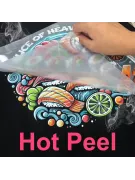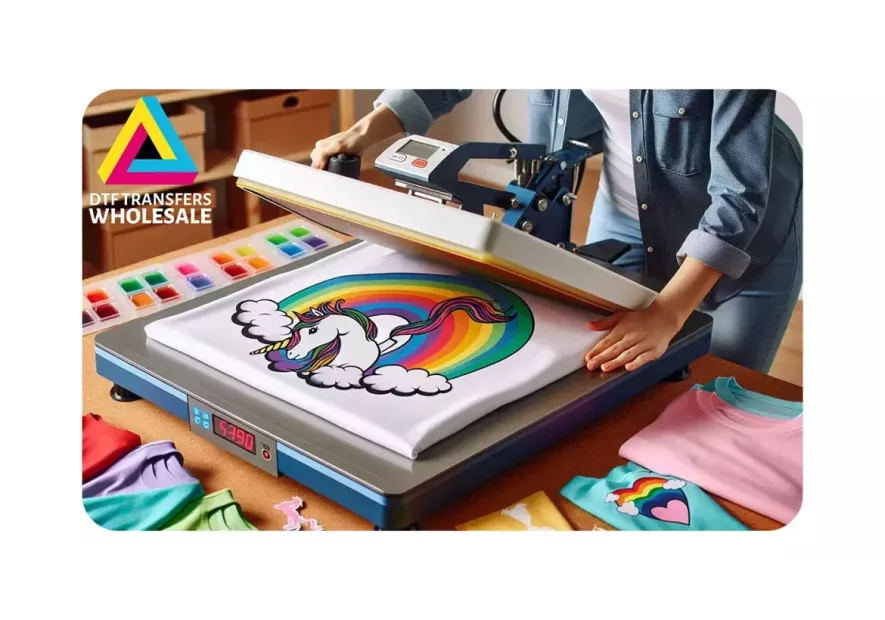A Closer Look at How to Apply DTF Transfers for a Better Result

A Closer Look at How to Apply DTF Transfers for a Better Result
Direct-to-film (DTF) transfers offer unparalleled flexibility and quality to both small businesses and large-scale operations. But how often do we pause to consider the finesse required to harness this technology to its full potential?
Join us as we explore the intricate dance of technology and technique, guiding you toward achieving impeccable results that set your brand apart. Ready to learn how to apply DTF transfers?
Continue reading below.
What are DTF Transfers?
DTF transfers are a method of printing designs onto special films. These films are then applied to various types of materials using heat and pressure. This process allows for vibrant, detailed designs that can adhere to a wide range of materials.
The Benefits of Using DTF Transfers
DTF transfers offer several advantages for those in the wholesale business.
They allow for high-quality printing on different types of materials and fabrics. This flexibility is crucial for businesses that deal with a variety of products.
DTF transfers can also produce vibrant colors and intricate designs, which can enhance the appeal of the final products. This method is cost-effective for large batches.
It saves time and resources by allowing for the production of numerous transfers in a single batch.
Common Challenges in Applying DTF Transfers
While DTF transfers offer many benefits, there are also challenges to be aware of. One major issue is excess ink.
Sometimes, during the printing process, too much ink is applied to the film. This can lead to smudging or bleeding when the design is transferred to the fabric, potentially ruining the product.
Another challenge is banding issues. Banding refers to lines or streaks that appear in the printed design, often due to problems with the printer or the printing process itself. These issues can affect the quality of the final product.
Preparing for Application
The first step towards a flawless DTF transfer is ensuring your design is primed for the process. This means choosing images with high resolution and adjusting your design's color profile to match the DTF printing specifications.
It's also important to consider the size and placement of your design on the garment to ensure it looks its best when worn. Keeping the design within the recommended dimensions helps avoid issues like stretching or distortion.
The next step involves preparing both the material and your work area. The material should be clean, dry, and free from any wrinkles or folds. Pre-treating the material can also enhance the adhesion and longevity of the transfer.
Your work area should be clean, well-organized, and free from dust or debris that could interfere with the application process. A tidy workspace helps in achieving better results and increases efficiency during the application process.
Importance of Using the Right Equipment and Materials
Using the right equipment and materials is essential for success. This means investing in a high-quality DTF printer and heat press, which are fundamental to achieving professional-grade transfers.
Additionally, using premium DTF films and inks can significantly impact the vibrancy and durability of the final product.
For businesses aiming to produce large volumes of transfers, it's also crucial to consider the scalability and reliability of your equipment. Machines that are designed for high-volume production and can operate consistently under continuous use are pivotal in maintaining a steady output without compromising on quality.
How to Apply DTF Transfers?
Start by setting your heat press to the recommended temperature for DTF transfers, usually between 320°F to 340°F (160°C to 170°C). Allow it to reach the set temperature before proceeding.
Ensure the material you are printing on is clean and free from wrinkles by pre-pressing it for 3-5 seconds. This step removes moisture and provides a smooth surface for the transfer.
Carefully place the DTF transfer film onto the surface, design side facing down. Make sure it's correctly aligned and positioned where you want the design to be.
Place a piece of parchment paper or a Teflon sheet over the transfer to protect it. Press down with the heat press for the recommended time, usually 15-20 seconds, with medium to high pressure.
After pressing, remove the printed material from the heat press. Some transfers require a hot peel (while still warm), and others need a cold peel (after cooling down). Follow the instructions specific to your DTF film.
For added durability, place the parchment paper or Teflon sheet back over the transferred design and press for an additional 5-10 seconds. This step helps secure the transfer onto the fabric.
Handling and Correcting Excess Ink Problems
Excess ink can result from over-saturation during the printing process. To mitigate this issue ensure your printer settings are optimized for the type of film and ink you're using. Reducing ink saturation in the printer settings can prevent excess ink without compromising the vibrancy of the design.
Inspect the printed transfers before applying them. If you notice areas with excess ink, consider reprinting or using a software adjustment to reduce saturation.
Strategies to Prevent Banding Issues
Banding often occurs due to printer issues or improper setup. To prevent this keep your printer in optimal condition with regular maintenance. Clean the printheads to prevent clogging and ensure consistent ink flow.
Ensure the environment is free from dust and maintains a stable temperature and humidity level, as fluctuations can affect print quality.
Regularly calibrate your printer to ensure accurate color output and uniform ink distribution. This step is crucial for preventing banding and ensuring high-quality prints.
Troubleshooting Common Problems
Beyond excess ink and banding, several other challenges may arise when working with DTF transfers. Addressing these effectively can significantly improve your operation's efficiency and product quality.
Adhesion Issues
Sometimes, DTF transfers may not adhere properly to the material, leading to peeling or cracking after application.
Ensure the material is pre-pressed to remove moisture and wrinkles. Adjust the heat press temperature and pressure according to the transfer film's specifications, and make sure the pressing time is adequate.
Using a Teflon sheet during the final press can also enhance adhesion. If problems persist, it may be necessary to reevaluate the quality of the transfer film or the adhesive powder used.
Color Fidelity Problems
Colors on the transferred design may not match the original digital image, appearing faded or inaccurate.
Regularly calibrate your printer to ensure accurate color reproduction. Use high-quality DTF inks and adjust the printer settings to match the specific type of film and ink. Conducting test prints before running large batches can help identify and adjust for color discrepancies early in the process.
Durability Concerns
Transferred designs might show signs of wear, such as fading or cracking.
Quality assurance starts with using premium materials. Opt for high-grade transfer films, inks, and adhesive powders.
After application, ensure the transfer is cured under the right conditions. If necessary, according to the ink and transfer film manufacturer's instructions. Educating customers on proper care for DTF-prints can also prolong the life of the product.
Tips for Achieving Consistent Quality in DTF Transfers
Create a standardized workflow for the DTF transfer process, from printing and curing to pressing and quality checks. Consistency is key to minimizing variables that can affect quality.
Ensure that all operators are well-trained and understand the nuances of the DTF process. Skilled technicians can identify potential issues before they affect the final product.
Incorporate regular quality checks at various stages of the production process.
- Inspect the prints after printing
- Check the transfers post-application
- Evaluate the final product after curing
Regular maintenance of your printing and heat press equipment can prevent many issues before they start. This includes:
- Cleaning printheads
- Ensuring heat presses apply even pressure
- Calibrating printers for accurate color output
Keep detailed records of successful print runs, including:
- The type of material used
- Ink settings
- Transfer film
- Pressing conditions
This information can serve as a valuable reference to replicate success and troubleshoot problems.
Maintaining Quality and Consistency
Store DTF transfers in a cool, dry place away from direct sunlight. Humidity and heat can affect the adhesive properties of the transfers, leading to application issues. Use airtight containers or bags to protect them from moisture and dust.
Handle DTF transfers by the edges to avoid fingerprints or creases on the transfer surface. Any contamination or damage can affect the quality of the print.
Organize your transfers by:
- Type
- Color
- Design for easy access
This saves time during production and reduces the risk of using the wrong transfer or damaging them during retrieval.
Adhere to a regular maintenance schedule for your DTF printer and heat press. After application, conduct a thorough inspection of the final product. Check for proper adhesion, color fidelity, and appearance.
Mastering the Art of DTF Transfers: A Key to Excellence
Understanding how to apply DTF transfers effectively is pivotal for anyone in the textile industry. With the right preparation, application techniques, and troubleshooting strategies, businesses can achieve high-quality results that stand out in the market.
If you're looking to elevate your DTF transfer projects, look no further. At DTF Transfers Wholesale, our company specializes in providing high-quality, efficient, and affordable DTF wholesale services. Leveraging cutting-edge technology and a team of experienced professionals, we guarantee precision and accuracy for crisp, clear images that exceed expectations.
Visit our website and discover how we can make your next project a success.







Leave a comment